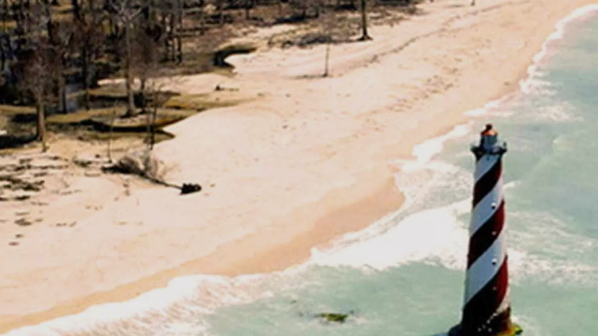Legal Challenges to the Great Nicobar Infrastructure Project (GS Paper 3, Infrastructure)

Context
- The Great Nicobar Infrastructure Project has become a focal point of legal and environmental debates in India.
- Initiated to transform the southernmost tip of the Andaman and Nicobar Islands into a strategic and economic hub, the project has faced significant challenges regarding its environmental impact, legal clearances, and indigenous rights.
- This article explores the details of the project, the legal controversies it has sparked, and the ongoing judicial responses.
Introduction
- The Great Nicobar Infrastructure Project, unveiled in March 2021, represents a substantial investment in the development of Great Nicobar Island.
- With a projected budget of ₹72,000 crore, the project aims to establish an international transshipment terminal, an international airport, a power plant, and a township.
- However, the project's ambitious scope has attracted legal scrutiny, particularly concerning its environmental implications and impacts on indigenous communities.
Overview of Great Nicobar Island
Geographical and Ecological Features
Great Nicobar Island, part of the Andaman and Nicobar archipelago, covers an area of 910 square kilometers. It is characterized by its hilly terrain, lush rainforests, mangroves, and coastal Pandan forests. The island receives around 3,500 mm of annual rainfall and hosts a diverse range of flora and fauna. Key species include:
- Giant Leatherback Turtle
- Nicobar Megapode
- Great Nicobar Crake
- Nicobar Crab-Eating Macaque
- Nicobar Tree Shrew
Tribal Communities
The island is home to two tribal communities:
- Shompen: A group of about 250 individuals, primarily hunter-gatherers living in the interior forests, classified as a Particularly Vulnerable Tribal Group.
- Nicobarese: Engaged in farming and fishing activities.
Components of the Great Nicobar Infrastructure Project
International Transshipment Terminal
- The terminal aims to enhance cargo transshipment capabilities and boost regional and global maritime engagement.
- It is expected to play a key role in positioning India as a significant maritime hub.
International Airport
- The airport is designed to support maritime services, attract both international and national visitors, and promote sustainable tourism.
- It is expected to facilitate greater connectivity and economic opportunities for the region.
Power Plant
- To meet the energy needs of the island, the project includes the establishment of a power plant, ensuring a reliable energy supply for the infrastructure and future developments.
Township
- The development of a township will accommodate the anticipated population growth and infrastructure demands associated with the project.
Legal Challenges
Environmental and Coastal Regulation Zone (CRZ) Clearances
The project has faced challenges from environmental activists and the Conservation Action Trust (CAT). Key concerns include:
- Biodiversity Impact: The potential irreversible damage to the island’s rich biodiversity.
- Inadequate Environmental Impact Studies: Allegations that the environmental impact assessments were insufficient.
- Clearance Process Issues: Questions about the legitimacy of the clearance process, including alleged conflicts of interest.
Specific Legal Issues
- Forest Clearance: The project plans to cover 166 square kilometers, including the felling of 130.75 square kilometers of forests, raising concerns about deforestation and habitat loss.
- Petitions to NGT:
- One petition seeks the exclusion of parts of the project from ecologically sensitive coastal areas, citing violations of the 2019 Island Coastal Regulation Zone (ICRZ) notification.
- Another petition alleges contempt of the NGT’s April 2023 order, claiming non-compliance by the Ministry of Environment, Forests & Climate Change (MoEFCC) regarding the formation of a High-Powered Committee (HPC) and provision of necessary details.
NGT’s Actions and Findings
High-Powered Committee (HPC) Review
- The NGT formed a High-Powered Committee to reassess the project’s green clearance.
- The HPC concluded that the transshipment port did not fall within the prohibited Island Coastal Regulation Zone-IA (ICRZ-IA) areas, which include ecologically sensitive zones such as mangroves, coral reefs, and turtle nesting grounds.
NGT’s Special Bench Findings
- The NGT's special bench acknowledged some deficiencies in coral conservation and the port location but did not find grounds to interfere with the forest clearance.
Calcutta High Court Case
The Conservation Action Trust (CAT) has filed a writ petition before the Kolkata High Court challenging the NGT’s April 2023 order. CAT argues that:
- Jurisdictional Issues: The NGT special bench lacked jurisdiction over challenges to forest clearance, which should have been handled by the eastern zone bench.
- Statutory Clearances: The petition seeks to quash the statutory clearances granted for the project.
Conclusion
- The Great Nicobar Infrastructure Project represents a significant economic and strategic initiative for India, particularly in enhancing its maritime capabilities and addressing regional development needs.
- However, the project’s implementation is fraught with legal and environmental challenges.
- The ongoing judicial reviews underscore the need for a balanced approach that addresses both developmental goals and environmental conservation.
- The project's future will likely hinge on how well it navigates these complex legal and ecological issues, ensuring that it aligns with sustainable development principles while respecting the rights of indigenous communities and preserving the island's unique biodiversity.


